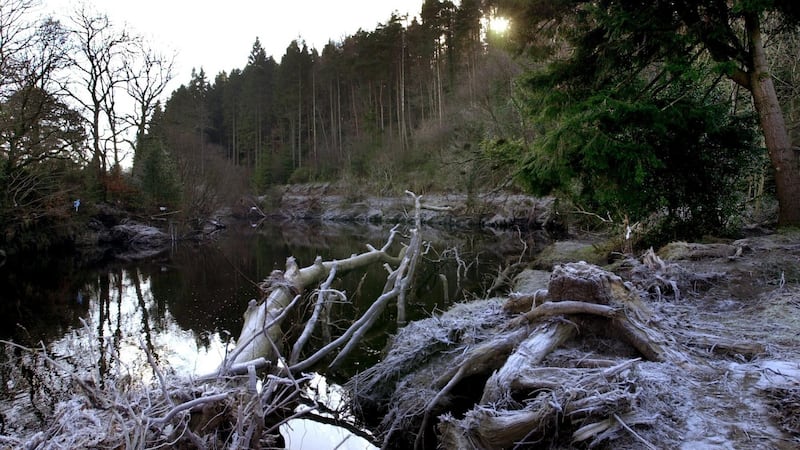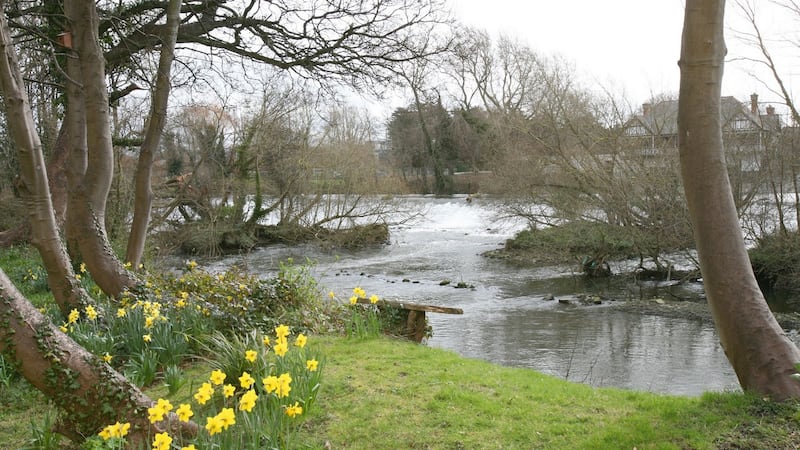We have been drawn to rivers since long before the dawn of history.
We were attracted to watercourses for their obvious and essential gifts of food and rapid transport, which made them favoured sites for settlements. But perhaps we were also drawn to them for many less tangible but still vital benefits, so that we continue to delight in walking alongside, or kayaking within, their flowing waters today.
Ireland’s exceptional river wealth is rightly celebrated, from the feisty mountain trout streams that inspired WB Yeats’s “wise and simple” fisherman, to the majesty of the Liffey, reflecting the lives of myriad Dubliners in the work of James Joyce.
Our rivers often retain fragments of natural beauty lost in surrounding agricultural and urban intensification. Yet they are also inevitable conduits for the detritus of the catchments they drain, barometers of the health or sickness of our landscapes. So a riverside walk can be a source of both pleasure and pain to the observant walker or kayaker, as is evident from these reflections by five people who spend a lot of time down by the river.

What are the special pleasures of river walks?
Olivia O'Leary: Rivers are intimate in a way that beaches are not. Beaches are magnificently noisy with waves and wind and screechy gulls. Rivers have their own drama but it unfolds quietly, always leading you around the next bend. On a soft grassy surface like the Barrow towpath, you won't even hear your own footfall.
Mark Boyden: One of my earliest memories is of being fascinated by the music of a mountain stream. Particular pleasures include a sense of timelessness; positive languidity; negative ions; stripping off and snorkelling; pure joie de vivre; sensing the interconnectedness of all species and habitats.
Liam Lysaght: Rivers are special, one of the few remaining places you get the sense of naturalness. They have a dynamic rhythm, responding to topography, rainfall and seasons. They are the givers of life, supporting wondrously rich biodiversity.
Sinéad O'Brien: I love the sound of the water and its constant movement. You end up imagining where it has come from and where it's going to and that you could go there too. Rivers are like the arteries of a landscape, with every little stream meeting bigger streams and eventually ending up in the river. I love that feeling of connection with the landscape.
David Staunton: Rivers are constantly moving yet paradoxically still have the power to transport me back in time. Walking along the meandering and modest Castlebar river evokes the happiest of childhood memories for me and I thank it for having provided us with so many watery backdrops to our young , playful imagination.
What do you look out for?
O'OL: The heron on the weir; the kingfisher diving; the otter swimming along beside you; pussy willow in the spring; the yellow flags in June; meadowsweet, purple loosestrife and willowherb all summer; the woods' autumn colours reflected in the lacquer-smooth water.
MB: I seek a holism and continuum of habitat, niche, species, and water quality that combine to create a healthy aquatic ecosystem, but I am equally pleased by the simple surprise of a kingfisher or the dunking of a dipper. Rivers, and their water quality, present the sum total of human and natural life in the catchments through which they flow. We need to develop "catchment consciousness".
LL: Otters, kingfishers, dippers. But one should always stop and take time to look at the teeming insect life of rivers. On a balmy evening, watching clouds of flies on the water, the odd mayfly taken by a trout, and beautiful damselflies fluttering by reeds gives you a sense of just how special nature is.
SO'B: Signs of wildlife – badger and deer footprints and otter spraints [droppings]. I imagine all the creatures that have travelled along the path before me. River birds: grey wagtails and kingfishers, but dippers are my favourite. They look so cute with their white bib, zipping and bobbing from rock to rock but they have an underwater alter-ego that is a superbly adapted swimmer-hunter.
DS: All rivers have character and temperament. Personally I am less concerned about aesthetics and more about the river's psyche or soul. I make an effort to notice the life and energy of what is there but always keep an eye out for the wise heron (corr réisc) and the exquisite kingfisher (cruidín).
What may spoil your pleasure?
OO'L: Noisy motor bikes which are more likely with a hard surface, and rubbish.
MB: Plastics, silts (salmon, trout and pearl mussels' enemy number one), eroded banks, channelised streams and inappropriate trees.
LL: Rivers are tranquil places that should weave and flow with the landscape. Concrete and straight lines spoil that pleasure. Best experienced at a pace that matches the flow of the river – anything that speeds people along also spoils the pleasure.
SO'B: Nasty slicks of dirty wastewater, litter snagged in overhanging branches. Slurry spreading when kayaking – you try to keep your mouth closed and not fall in.
DS: Like many others, I used to expect the river to nurture and replenish us while conversely being a sewer with which to wash away our filth. Nowadays, it hurts me to see rivers being taken for granted, treated as "our" resource to do with as we please.

What are the benefits?
OO'L: There's a calm which comes with walking beside water, for those who are grief-stricken, or heartbroken, or lonely. Local doctors recommend the soft, grassy Barrow towpath for those recovering from hip or knee replacements and for joggers.
MB:
Dappled light playing on the swilling of water through a riffle; an egret opening its wings and wheeling away; trees dancing in wind; the leap of a
and after, fire in the grate; these primal animations captivate us, for our own good.
LL: The physical benefits of exercise. And being observant and inquisitive about the natural environment stimulates the mind and takes your thought off anxieties. It's a form of therapy, free therapy.
SO'B: The sound and sight of water brings a special sense of wellbeing that is somehow both peaceful and invigorating, way better than a spa. River trails are good for entry-level walkers as you don't have to be mountain-trail fit to enjoy them.
DS: Walking by a river allows us to mindfully contemplate many of the complex themes which affect our lives. Not unlike our lives, rivers flow constantly onwards, yet, by simply stopping on a riverbank and "noticing", we can slow down our busy minds and enjoy that "never to be repeated" moment. Rivers can teach us about hope, resilience and accepting change.
How should riverbank walks be maintained?
OO'L: With sensitivity to the wild nature of such paths.
MB: Minimally safe, unobtrusive, badger-friendly. Some should be wheelchair-friendly too.
LL: Soft verdant ways.
SO'B: Different levels of accessibility for everyone, but with minimal maintenance – the wilder the better.
DS: Less is always more – allow our rivers to "re-wild".
Your two favourite routes?
OO'L: The Nore, Kilkenny to Bennettsbridge; the Barrow towpath, Ballytiglea to St Mullins.
MB: Coolemane stream walk, the waterwheel to the Coomhola river, Co Cork; Glengarriff forest river walks on the Beara Peninsula.
LL: The Barrow, Ballytiglea Bridge to Graiguenamanagh, Co Kilkenny; the Dawros river in Connemara.
SO'B: The Avonmore, Avondale forest trail, Co Wicklow; the Dissour, Glenbower Woods, east Cork.
DS: The Castlebar to Turlough Greenway; the Liffey, Chapelizod to Islandbridge.
- Olivia O'Leary is a broadcaster and journalist; Mark Boyden is project director at Streamscapes; Liam Lysaght is director of the National Biodiversity Data Centre; Sinéad O'Brien is co-ordinator of the Sustainable Water Network; David Staunton is a psychotherapist and founder of Walk Inniú.



















